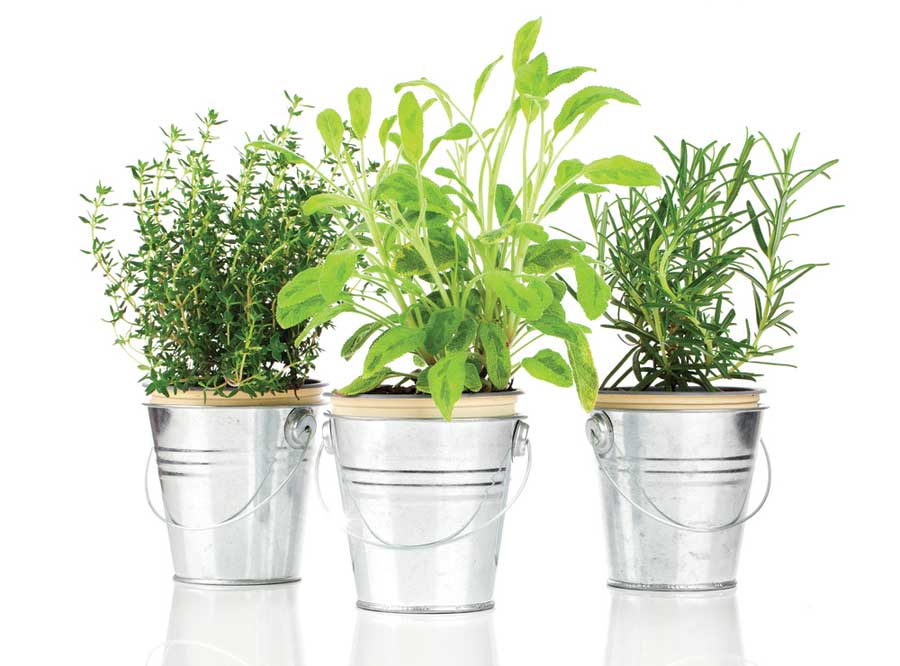Gardening with Altitude
28 Jun 2015
High-altitude gardening requires an attitude adjustment.
But with a little knowledge, you can make the most of the short growing season.
Many serious diseases afflict plants, but sometimes I think the worst is one most gardeners rarely acknowledge—“zonitis,” which causes many plants to perish before their time. This dread disease has definite symptoms and manifestations. An example is when gardeners afflicted with “zone denial” grow rhododendrons in full sun on heavy alkaline clay soil, or try to overwinter palm trees. But the most virulent and tragic strain of zonitis occurs when gardeners at high altitude insist on growing tomatoes and replicating manicured suburban gardens, instead of seeking out and celebrating the many plants that thrive in short summer seasons and abundant frosty nights.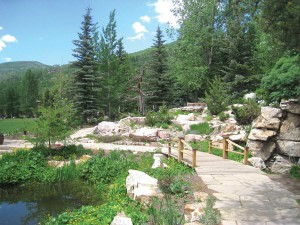 A few decades ago, a dear friend visited a nursery in Crested Butte that stocked mostly veggies and annuals, which would barely last a few weeks outside in that town, where the frost-free season is measured by the week. My friend asked if the nursery had any rock-garden plants or perennials, and the cashier asked what those might be, despite the fact that Crested Butte is one of the most glorious places to grow classic English perennials like delphiniums, not to mention the vast array of alpine plants like gentians, primroses, dianthuses and saxifrages.
It seems many mountain folk become enchanted with our high-altitude setting and after purchasing their scenic home they seem to lose all common sense and start to create an impeccable greensward worthy of a Master’s golf course. Then they develop a yen to grow subtropical shrubs and dinner-plate-size dahlias that really do best with far more heat in the day and night to grow well.
So my first and last suggestion to anyone trying to garden in the mountains is to really learn and concentrate on native plants. For one thing, those plants evolved alongside deer, bears, rabbits, gophers and every other critter. These creatures may often be your nearest neighbors who would be more than happy to munch on any non-natives you plant. There is nothing sadder than when a mountain gardener creates a lush, robust garden full of tender leafage and inappropriate plants that might best be described as Bambi’s salad bar.
The trick to happy mountain gardening is to grow tough native plants that are not attractive to wildlife, but still deliver bang for the buck.
A few decades ago, a dear friend visited a nursery in Crested Butte that stocked mostly veggies and annuals, which would barely last a few weeks outside in that town, where the frost-free season is measured by the week. My friend asked if the nursery had any rock-garden plants or perennials, and the cashier asked what those might be, despite the fact that Crested Butte is one of the most glorious places to grow classic English perennials like delphiniums, not to mention the vast array of alpine plants like gentians, primroses, dianthuses and saxifrages.
It seems many mountain folk become enchanted with our high-altitude setting and after purchasing their scenic home they seem to lose all common sense and start to create an impeccable greensward worthy of a Master’s golf course. Then they develop a yen to grow subtropical shrubs and dinner-plate-size dahlias that really do best with far more heat in the day and night to grow well.
So my first and last suggestion to anyone trying to garden in the mountains is to really learn and concentrate on native plants. For one thing, those plants evolved alongside deer, bears, rabbits, gophers and every other critter. These creatures may often be your nearest neighbors who would be more than happy to munch on any non-natives you plant. There is nothing sadder than when a mountain gardener creates a lush, robust garden full of tender leafage and inappropriate plants that might best be described as Bambi’s salad bar.
The trick to happy mountain gardening is to grow tough native plants that are not attractive to wildlife, but still deliver bang for the buck.
Here are my Ten Commandments for High-Altitude Gardening:
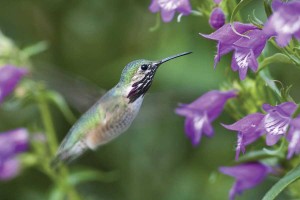 Thou shalt not whine about pitiful zone affliction. You may be in Zone 4 and are convinced the only things you can grow well are cool-season cabbages. Then some creature comes along and eats them. PuhLEASE, don’t come whining to me or anyone else. You chose to live there, so LOVE it!
Don’t plant a manicured lawn and expect me not to make fun of you. Go naturalistic. It’s appropriate! If you plant, use perennials, shrubs and trees as much as possible, and plant fast-growing, cold-hardy vegetables with short maturity times.
Get creative with garden equipment, like frost and shade cloths, to protect plants from extreme temperatures and hail. Raised beds keep soil warmer, so utilize these as well.
By all means plant annuals, but mostly in containers. Put them on wheels so you can rush them to safety when you get a late-June snowstorm or a sudden drop into the teens in mid-August. Place flat rocks upright around containers to absorb heat during the day and release it at night.
Build a solarium or greenhouse to indulge tropical urges, as well as any yearning for tomatoes and pepper
Thou shalt not whine about pitiful zone affliction. You may be in Zone 4 and are convinced the only things you can grow well are cool-season cabbages. Then some creature comes along and eats them. PuhLEASE, don’t come whining to me or anyone else. You chose to live there, so LOVE it!
Don’t plant a manicured lawn and expect me not to make fun of you. Go naturalistic. It’s appropriate! If you plant, use perennials, shrubs and trees as much as possible, and plant fast-growing, cold-hardy vegetables with short maturity times.
Get creative with garden equipment, like frost and shade cloths, to protect plants from extreme temperatures and hail. Raised beds keep soil warmer, so utilize these as well.
By all means plant annuals, but mostly in containers. Put them on wheels so you can rush them to safety when you get a late-June snowstorm or a sudden drop into the teens in mid-August. Place flat rocks upright around containers to absorb heat during the day and release it at night.
Build a solarium or greenhouse to indulge tropical urges, as well as any yearning for tomatoes and pepper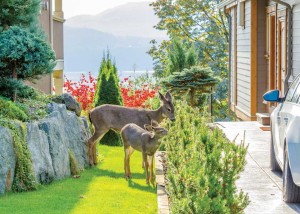 . Why anyone moves to Nederland or Sugarloaf and then develops a sudden case of tropical envy is beyond me. But people do. Anticipate this, and create your tropical retreat indoors.
Don’t complain to lowlanders about how a herd of elk just tromped through your garden and ate all your pansies. If you move to their living rooms, expect them to visit! And frankly, we’re jealous.
Don’t expect to spend much time in your garden from October to April—that’s seven months off to ski, vacation, dream and relax. Don’t schedule long trips in the five other months when your garden needs you. Why on earth would you want to be anywhere else?
Join a garden club. Seek out and visit neighbors who garden—learn from their mistakes and copy their successes (copying is not a sin; it’s a garden rule).
Burn most of the gardening books you’ve bought and don’t believe anything anyone tells you—especially “experts” like me! You can have a beautiful mountain garden, but you’ll just have to work harder at it.
. Why anyone moves to Nederland or Sugarloaf and then develops a sudden case of tropical envy is beyond me. But people do. Anticipate this, and create your tropical retreat indoors.
Don’t complain to lowlanders about how a herd of elk just tromped through your garden and ate all your pansies. If you move to their living rooms, expect them to visit! And frankly, we’re jealous.
Don’t expect to spend much time in your garden from October to April—that’s seven months off to ski, vacation, dream and relax. Don’t schedule long trips in the five other months when your garden needs you. Why on earth would you want to be anywhere else?
Join a garden club. Seek out and visit neighbors who garden—learn from their mistakes and copy their successes (copying is not a sin; it’s a garden rule).
Burn most of the gardening books you’ve bought and don’t believe anything anyone tells you—especially “experts” like me! You can have a beautiful mountain garden, but you’ll just have to work harder at it.
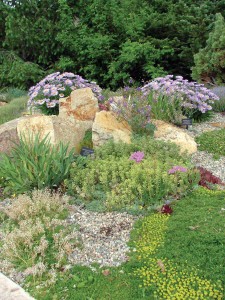 Visit the Betty Ford Alpine Gardens in Vail and the Yampa River Botanic Park in Steamboat Springs for imaginative planting ideas. In fact, nearly every Colorado mountain town practices lavish horticulture to attract tourists. These gardens incorporate literally thousands of plants that humble low-elevation visitors. Patronize them, become a member, subscribe to their newsletters, and learn from them, first and foremost.
If you take just a few of these commandments to heart, you’ll find mountain gardening both pleasurable and rewarding, and you can produce results that will be the envy of those of us afflicted with a higher zone rating. You’ll also find there’s nothing more invigorating than recovering from a case of zonitis.
Visit the Betty Ford Alpine Gardens in Vail and the Yampa River Botanic Park in Steamboat Springs for imaginative planting ideas. In fact, nearly every Colorado mountain town practices lavish horticulture to attract tourists. These gardens incorporate literally thousands of plants that humble low-elevation visitors. Patronize them, become a member, subscribe to their newsletters, and learn from them, first and foremost.
If you take just a few of these commandments to heart, you’ll find mountain gardening both pleasurable and rewarding, and you can produce results that will be the envy of those of us afflicted with a higher zone rating. You’ll also find there’s nothing more invigorating than recovering from a case of zonitis.
Plants for Mountain Gardens
Here are Panayoti Kelaidis’ picks for mountain gardens above 6,000 feet.
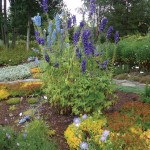 Monkshood and Delphinium. I’m always amazed at how wonderfully these two related genera perform at altitude. I’ve seen delphiniums climb to unbelievable heights in some mountain gardens, and even without fussing they seem to perform well, blooming for a month or even two in cooler years. These species’ blooms, their intense colors, their ease of cultivation and their deer resistance make these flowers a must at altitude.
Monkshood and Delphinium. I’m always amazed at how wonderfully these two related genera perform at altitude. I’ve seen delphiniums climb to unbelievable heights in some mountain gardens, and even without fussing they seem to perform well, blooming for a month or even two in cooler years. These species’ blooms, their intense colors, their ease of cultivation and their deer resistance make these flowers a must at altitude.
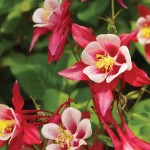 Columbine. It’s our state flower, for heaven’s sake. Everyone in Denver plants columbines, even though they’re often short-lived with flowers that last a brief time in our heat, and they’re subject to leaf miners and other pests. In the mountains, though, most any type of columbine lives forever, blooms for months and spreads. But if you plant our native blue one, don’t plant any other kind if you prefer the blue, or it will cross-pollinate and create new colors.
Conifers. You can grow more than just blue spruce in the mountains. I’d try a wealth of dwarf conifers, although you have to protect them from browsing with some tactfully placed chicken wire when the trees are young. Once established—and provided you don’t overfertilize and overwater—many dwarf conifers become less appealing to browsers and settle in for a long life. I recommend most pines, Norway spruce cultivars and the deciduous tamarack—especially Larix decidua, which is rarely grown in Colorado and has wonderful fall color. It is deciduous, however, and it can grow very big.
Containers. I know containers aren’t a plant, but consider growing many things in containers, including perennials, and especially alpine flowers in troughs. For whatever reason, plants in containers at altitude usually grow and bloom better than those in the lowlands, and don’t need as much watering. But don’t forget to feed them.
Columbine. It’s our state flower, for heaven’s sake. Everyone in Denver plants columbines, even though they’re often short-lived with flowers that last a brief time in our heat, and they’re subject to leaf miners and other pests. In the mountains, though, most any type of columbine lives forever, blooms for months and spreads. But if you plant our native blue one, don’t plant any other kind if you prefer the blue, or it will cross-pollinate and create new colors.
Conifers. You can grow more than just blue spruce in the mountains. I’d try a wealth of dwarf conifers, although you have to protect them from browsing with some tactfully placed chicken wire when the trees are young. Once established—and provided you don’t overfertilize and overwater—many dwarf conifers become less appealing to browsers and settle in for a long life. I recommend most pines, Norway spruce cultivars and the deciduous tamarack—especially Larix decidua, which is rarely grown in Colorado and has wonderful fall color. It is deciduous, however, and it can grow very big.
Containers. I know containers aren’t a plant, but consider growing many things in containers, including perennials, and especially alpine flowers in troughs. For whatever reason, plants in containers at altitude usually grow and bloom better than those in the lowlands, and don’t need as much watering. But don’t forget to feed them.
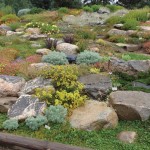 Flanagan’s Curry (Helichrysum -flanaganii). So far this wonderful plant, aromatically reminiscent of curry, is only available from one or two local nurseries. It makes an absolutely plush and fabulous carpet at Yampa River Botanic Park and loves our mountains, where it thrives most anywhere it’s planted.
Herbs. Most herbs are not super cold tolerant, but can survive the mountains in warmer months. English lavender (Lavandula angustifolia) thrives in warmer mountain areas, as do chives and other herbs, which probably will do best in containers that can be brought indoors on chilly nights. Few herbs are attractive to critters.
Natives. Consider taking classes on native gardening, and use plants that blend with the natural environment as much as possible. You won’t have to water natives while you’re gone, and deer and elk will find your landscape less appealing.
Primrose. More than 500 species of primrose exist, many of which thrive in the mountains. Most are shade-loving gems, although many like sun as well. Plant them by downspouts, because these plants like moisture. Other flowers to consider include ornamental onion, golden marguerite, bellflowers, red valerian, bleeding heart, purple coneflower, globe thistle, wallflower, blanketflower, gentian, cranesbill, daylilies, irises, lupines, poppies, penstemons, pasque flowers and painted daisies, most of which are deer and rabbit resistant.
Rhubarb. I’m not talking about the common vegetable, but rather the exotic ornamentals like Rheum palmatum ‘Red Ace,’ which has deep, reddish-purple leaves and bright red spikes of flowers that can grow up to 9 feet tall. Rhubarbs need lots of compost and water, however, to grow their best.
Flanagan’s Curry (Helichrysum -flanaganii). So far this wonderful plant, aromatically reminiscent of curry, is only available from one or two local nurseries. It makes an absolutely plush and fabulous carpet at Yampa River Botanic Park and loves our mountains, where it thrives most anywhere it’s planted.
Herbs. Most herbs are not super cold tolerant, but can survive the mountains in warmer months. English lavender (Lavandula angustifolia) thrives in warmer mountain areas, as do chives and other herbs, which probably will do best in containers that can be brought indoors on chilly nights. Few herbs are attractive to critters.
Natives. Consider taking classes on native gardening, and use plants that blend with the natural environment as much as possible. You won’t have to water natives while you’re gone, and deer and elk will find your landscape less appealing.
Primrose. More than 500 species of primrose exist, many of which thrive in the mountains. Most are shade-loving gems, although many like sun as well. Plant them by downspouts, because these plants like moisture. Other flowers to consider include ornamental onion, golden marguerite, bellflowers, red valerian, bleeding heart, purple coneflower, globe thistle, wallflower, blanketflower, gentian, cranesbill, daylilies, irises, lupines, poppies, penstemons, pasque flowers and painted daisies, most of which are deer and rabbit resistant.
Rhubarb. I’m not talking about the common vegetable, but rather the exotic ornamentals like Rheum palmatum ‘Red Ace,’ which has deep, reddish-purple leaves and bright red spikes of flowers that can grow up to 9 feet tall. Rhubarbs need lots of compost and water, however, to grow their best.
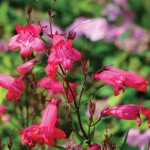 Trees. Aspens aren’t the only deciduous trees that thrive at altitude. Try European mountain ash, Ginnala maple, Shadblow serviceberry, hackberry, ‘Spring Snow’ crab apple, white or silver poplar, ‘Schubert’ chokecherry or Japanese tree lilac. Be sure to mulch, and consider soil moisture, exposure and drainage before planting.
Hummingbird Trumpet. This “California fuchsia” hails from Wyoming, Utah and Idaho, and may be in the same family as fuchsia, but is more closely related to fireweed. This vigorous ground cover forms wide masses yards across and is a blazing bright orange-scarlet color from July to frost, and a hummingbird magnet.
Trees. Aspens aren’t the only deciduous trees that thrive at altitude. Try European mountain ash, Ginnala maple, Shadblow serviceberry, hackberry, ‘Spring Snow’ crab apple, white or silver poplar, ‘Schubert’ chokecherry or Japanese tree lilac. Be sure to mulch, and consider soil moisture, exposure and drainage before planting.
Hummingbird Trumpet. This “California fuchsia” hails from Wyoming, Utah and Idaho, and may be in the same family as fuchsia, but is more closely related to fireweed. This vigorous ground cover forms wide masses yards across and is a blazing bright orange-scarlet color from July to frost, and a hummingbird magnet.
Panayoti Kelaidis is senior curator and director of outreach at Denver Botanic Gardens.


